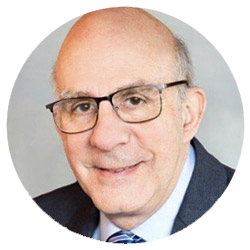
Advancing Evidence-Based Substance Use Disorder Treatment Policies
Penn LDI/CHERISH Conference Explores State Licensure Trends in Medications for Opioid Use Disorder
Substance Use Disorder
News | Video
As $54 billion in National Opioid Settlement funds begin moving out toward states, counties, and municipalities, there is widespread concern among health authorities that the legal victory does not become a repeat of the 1998 mega-billion-dollar Tobacco Master Settlement Agreement fiasco in which most states used the money for just about everything except tobacco cessation and education programs.
Over the last two years, a $26 billion National Opioid Settlement package was hammered out between 47 state attorneys general, and the three largest pharmaceutical distributors and opioid manufacturer Johnson & Johnson. Meanwhile, a separate collection of lawsuits against six more opioid manufacturing and distribution corporations is in the process of finalizing $28 billion in additional settlement payments for the public health catastrophe caused by their products.
Five top experts in the field of opioid use disorder and the legalities and logistics of the opioid legal settlements convened in a University of Pennsylvania virtual seminar on February 10 to discuss the specifics of how the funding could or should be best used by the state and local governments that receive it. One point the panelists made is that the agreements are more carefully written in an effort to ensure that opioid settlement funds actually go toward the treatment and prevention of opioid addiction. But they also warned why that is not a guarantee.
The seminar was co-sponsored by Penn’s Leonard Davis Institute of Health Economics (Penn LDI) and the Center for Health Economics of Treatment Interventions for Substance Use Disorder, HCV, and HIV (CHERISH).
The panelists were James Donahue, III, JD, Pennsylvania Executive Deputy Attorney General in the Public Protection Division; Christine Minhee, JD, attorney and founder of OpioidSettlementTracker.com; Rosalie Liccardo Pacula, PhD, Professor and Elizabeth Garrett Chair in Health Policy, Economics & Law at the University of Southern California’s (USC) Sol Price School of Public Policy; Joshua Sharfstein, MD, Vice Dean for Public Health Practice and Community Engagement at the Johns Hopkins School of Public Health; and moderator Shoshana Aronowitz, PhD, LDI Senior Fellow and Assistant Professor of Family and Community Health at the Penn School of Nursing.

“States and communities have one chance to get the allocation right and avoid some of the missteps that so diminished the public health impact of the tobacco settlement,” said Aronowitz as she opened the event. “Informed by that experience, the new opioid settlement funds come with guardrails. States must spend at least 70% of the money for prospective opioid-related expenses, including expanding access to treatment and buying the overdose reversal medication naloxone. In addition, only 15% of the funds can be used for administrative expenses or for governments to reimburse past opioid-related expenses. This leaves 15% for states to spend however they like.”
Minhee, whose OpioidSettlementTracker.com has been collecting and analyzing information from the thousands of lawsuits that ultimately converged and became the National Opioid Settlement, explained that the agreement specifies the monies must be used for abatement strategies aimed at the use of opioids. It includes “Exhibit E,” a detailed list of the “Core Strategies” fund recipients are expected to support, and a “Schedule B” of additional approved evidence-based or evidence-informed strategies that can be used.

But the panelists also indicated a number of serious concerns about whether the government entities that are receiving the huge flows of settlement funds will be able–or willing–to put the money to use in the effective, evidence-based ways most likely to save lives and help millions of people ensnared in the national opioid crisis.
Some of the other issues the panelists raised include the lack of full public reporting on how the monies are spent; a critical lack of local, affordable evidence-based treatment centers; existing laws that prevent substance use disorder patients from participating in evidence-based support programs; racial inequities in both addiction demographics and treatment; the likelihood that dramatically expanding naloxone distribution may drive up the price and accessibility of the overdose-reversing drug; the current widespread failure of local pharmacies to stock naloxone or medication-assisted treatment (MAT) drugs; and the increasingly toxic nature of the street drug supply that is heavily laced with deadly additives like fentanyl.
Overall, the issue of how the settlement funds will be allocated is the latest drama in a national health crisis and related legal saga that has been going on for three decades.
~ ~ ~
In the 1990s, pharmaceutical companies began much more aggressive marketing of opioids such as OxyContin. Many health care providers simultaneously began prescribing the same drugs in amounts that caused some of their patients to become addicted. Later, when those patients were unable to get further prescriptions, they turned to heroin and other street drugs.
According to the latest National Institutes of Health (NIH) estimates, more than 3 million U.S. residents are addicted to opioids. The NIH estimates 80% began with prescription pills. The Centers for Disease Control and Prevention’s (CDC) latest estimate is that more than 100,000 U.S. residents die of drug overdoses annually (or an average of 274 every day). About 80,000 of those are from opioid overdoses.
According to the CDC, the five states with the highest overdose deaths are
California, Florida, Ohio, Pennsylvania, and New York; the lowest five are Wyoming, North Dakota, South Dakota, Alaska, and Montana.
During the COVID-19 pandemic, the rates of addiction as well as overdose deaths have continued to rise. Death rates have been accelerated by the recent widespread use of fentanyl and other high-potency additives to “cut” opioids and other varieties of street drugs.
The costs of the opioid epidemic in both money and human suffering have been catastrophic for state, county, and municipal governments across the country. In 2014, California’s Santa Clara and Orange counties filed the nation’s first government-initiated lawsuit to hold opioid manufacturers and distributors liable for generating the U.S. opioid epidemic. Over the next seven years, thousands of state, county, municipal and other entities followed with their own lawsuits seeking billions of dollars in damages. This ultimately led to the 2021 events in which opioid manufacturers and distributors began agreeing to the settlement payouts to states, counties, and municipalities to fund opioid epidemic remediation efforts. The payouts will be made incrementally over periods ranging from 6-18 years.
Much of the settlement’s allocation recommendations were inspired by the “Strategies for Effectively Allocating Opioid Settlement Funds” report produced by the RAND-USC Schaeffer Opioid Policy Tools and Information Center (OPTIC).
~ ~ ~

Liccardo Pacula, Co-Director of OPTIC that conducted research to determine how settlement funds could best help save lives and mitigate harm, noted two of the most important strategies envisioned in the agreement. The first is to dramatically increase the supply of naloxone for first responders, health providers, and lay persons in the communities across the country. The second is to dramatically increase the availability and immediate access to local evidence-based treatment providers.
The agreement specifically calls for the use of evidence-based MATs that use drugs like buprenorphine and methadone as central parts of a facility’s therapy.
“The issue isn’t that people aren’t well meaning when they’re trying to address this,” said Sharfstein, a former Maryland Secretary of Health and top U.S. Food and Drug Administration (FDA) official. “It’s just that oftentimes the sources of local authority — the people who decision makers turn to in communities–may not be operating from evidence. It may be a local police chief who’s doing things the old way. Or it could be people who fundamentally think that addiction is not a chronic illness and just wish that ‘my child could receive a discreet period of treatment and then be totally cured.’ That desire is totally understandable, but it’s actually hard to square with the fact that addiction is a chronic illness and long-term treatment is sometimes necessary.”

Liccardo Pacula pointed out that “These are not cheap therapies, but they need to be covered for those in need and they need to provide the wraparound and recovery support services crucial to sustaining a healthy recovery. This kind of treatment has to be made more affordable for those without insurance or with insurance that doesn’t currently cover this treatment.”
Liccardo Pacula also sees important implementation issues. Her colleagues at USC have been studying buprenorphine access through pharmacies in poor, diverse neighborhoods. They are much less likely to have buprenorphine in stock behind the counter.
“So even if someone is willing to go see a doctor and initiate treatment and has a prescription, they can’t get it at their local pharmacy,” Liccardo Pacula said. “Another [one] of my biggest concerns with the settlement is that there is a lot of money being allocated for naloxone purchases. I think that’s a great strategy, but will that drive up the price of naloxone so communities can’t afford to distribute it widely? How do we make sure that this efficacious life-saving drug is affordable to people when there’s growing demand for it?”
She and the other panelists all emphasized that as with any large infusion of money into government entities, politics will be heavily involved in how the money is ultimately spent—and that is a key cause for worry, according to Sharfstein, who played a major role with Johns Hopkins in the development of the guiding principles for settlement allocations.
“The reason we have such a horrible overdose problem is not that we lack good ideas or good evidence, it’s that we often don’t put those ideas and evidence into practice for reasons that have to do with politics and the stigma around addiction,” said Sharfstein. “Sometimes, the people who are most politically persuasive at the state and local level are not those who advocate for evidence-based solutions. In some cases, they advocate for programs and approaches that make the problem worse. So, they put in money in ways that, in the end, generate more overdoses.”
Sharfstein cited five key principles for making allocation decisions:
Minhee noted that a “dirty secret” of the settlement agreement is that full public reporting on opioid remediation expenditures across the recipient venues is not required. The only public reporting requirement is for the 15% of all received funds that can be spent on non-opioid remediation activities.
Minhee also announced that her OpioidSettlementTracker.com is working in a data partnership with Kaiser Health News on a 50-state survey to learn which states promise to publicly report their settlement spending decisions. “So far, a very depressing number of states are committing to publicly reporting 100% of their opioid remediation expenditures,” she said.

Donahue, who helps oversee the implementation of settlement distribution funds and strategies in 67 Pennsylvania counties, said, “I don’t know what all 50 states are doing, but here in Pennsylvania, we set up a trust. It’s supervised by the court. There are annual requirements about exactly what money is spent on which resources and services. There are punishments if you don’t spend the money consistent with Exhibit E. We’ve had a number of meetings with all the municipalities and counties and the feedback we’ve gotten has been very sincere from the elected officials about the desire to use the money appropriately and get effective results. The reason for that is many of them have family members and neighbors who have been affected by this crisis. So, it’s a little bit different than some other types of issues that we have faced politically in the past.”
Another non-obvious potential barrier to effectively implementing the settlement principles is the tangle of laws and regulations that often prohibit the very actions needed to reduce overdose deaths and harm.
“In many cases,” said Liccardo Pacula, “it’s the law that makes minority populations so distrustful of outreach. For example, some of the recovery housing programs don’t allow residents to be taking any opioids to qualify for residence. But methadone and buprenorphine medications are included on those lists of banned substances, so people get taken out of recovery supportive services for adhering to evidence-based treatment protocols. These types of laws have disproportionately harmed some of the communities now being targeted with settlement funds. The laws need to be addressed so we can focus on actual treatment and resolution of past harms–as opposed to introducing new harms to these same communities.”
Aronowitz noted that the impact and policy responses to the opioid overdose crisis have been transformed by the COVID-19 pandemic, with inequalities and structural racism being exacerbated in minority populations. “The CDC recently reported that drug overdose data show troubling trends and widening disparities between different population groups. In just one year, overdose death rates increased 44% for Black people and 39% for American Indian and Alaska Native people. At the same time, a lower proportion of people from racial and ethnic minority groups have received substance use disorder treatment compared with white people.”
Sharfstein responded that “the agreement makes it possible to address some of these inequities, but it does not guarantee that they will be addressed,” he said. “From a process perspective, we recommend that communities that have been overlooked in the past, particularly minority communities, have a seat at the table and are actively involved in making decisions. The explicit goal should be enhancing racial equity so that as the investments and other policy decisions are made, you can see whether it’s working and circle back. And a great deal of transparency is required to make that happen.”
There was agreement among the panelists that the street realities of the drug crisis are highly dynamic and require new thinking and approaches that may not yet be fully anchored in hard evidence. Liccardo Pacula pointed to the deadly situation now created by a fentanyl-laced street drug supply that makes the availability of fentanyl test strips a potentially effective life-saving device, even lacking comprehensive evidence. But much the same as safe consumption sites or other harm reduction strategies, the test strips are politically controversial and illegal in some states.
Minhee emphasized the importance of using settlement money for harm reduction programs. She noted that harm reduction response and services don’t appear in the first three pages of Exhibit E–the Settlement list of the core categories of strategies prioritized by that document.
Donahue responded, “I think that dealing with harm reduction policies and proposals is important for the existing current group of drug users who are in significant harm’s way because of our current drug market and the lethality of the drugs that could be involved.” He noted that just because strategies are listed “in a different order doesn’t mean they were meant to be discounted.”
In a wrap up, Sharfstein said “The challenge isn’t to get people to care. The challenge is to be able to have a process that you can talk through. You can look at the laws. You can look at all the investments and ask, ‘are we really lining this up with what we think will have the biggest impact? Can we show that? Can we show that there are things that we’re looking at that make sense?’ If you have an argument that something’s promising, is that argument based on data? Are people able to get the core things that are absolutely necessary in some of these communities where these decisions are happening? Are they going to an emergency room but can’t get addiction treatment? Are they showing up at a health department where there’s no naloxone to give out? So, are we really making sure that those core things are done? That’s the really important focus. And even with well-meaning political leaders, it doesn’t guarantee that you get the right results. That’s the big puzzle that has to be put together for this to work.”
“It’s just really incumbent on people who want to see the right outcome and fewer overdoses to fight for this process to be as fair, inclusive, and effective as possible,” Sharfstein concluded.


Penn LDI/CHERISH Conference Explores State Licensure Trends in Medications for Opioid Use Disorder

Evidence for a Low-Threshold Approach

Report Cards Associated With Reduced Prescribing
Potential Unintended Consequences for Patients with Sickle Cell Disease and Boney Cancer Pain
Four Federal Policy Recommendations
Collaborative National Center Includes Scientists from Penn LDI and 3 Other Universities